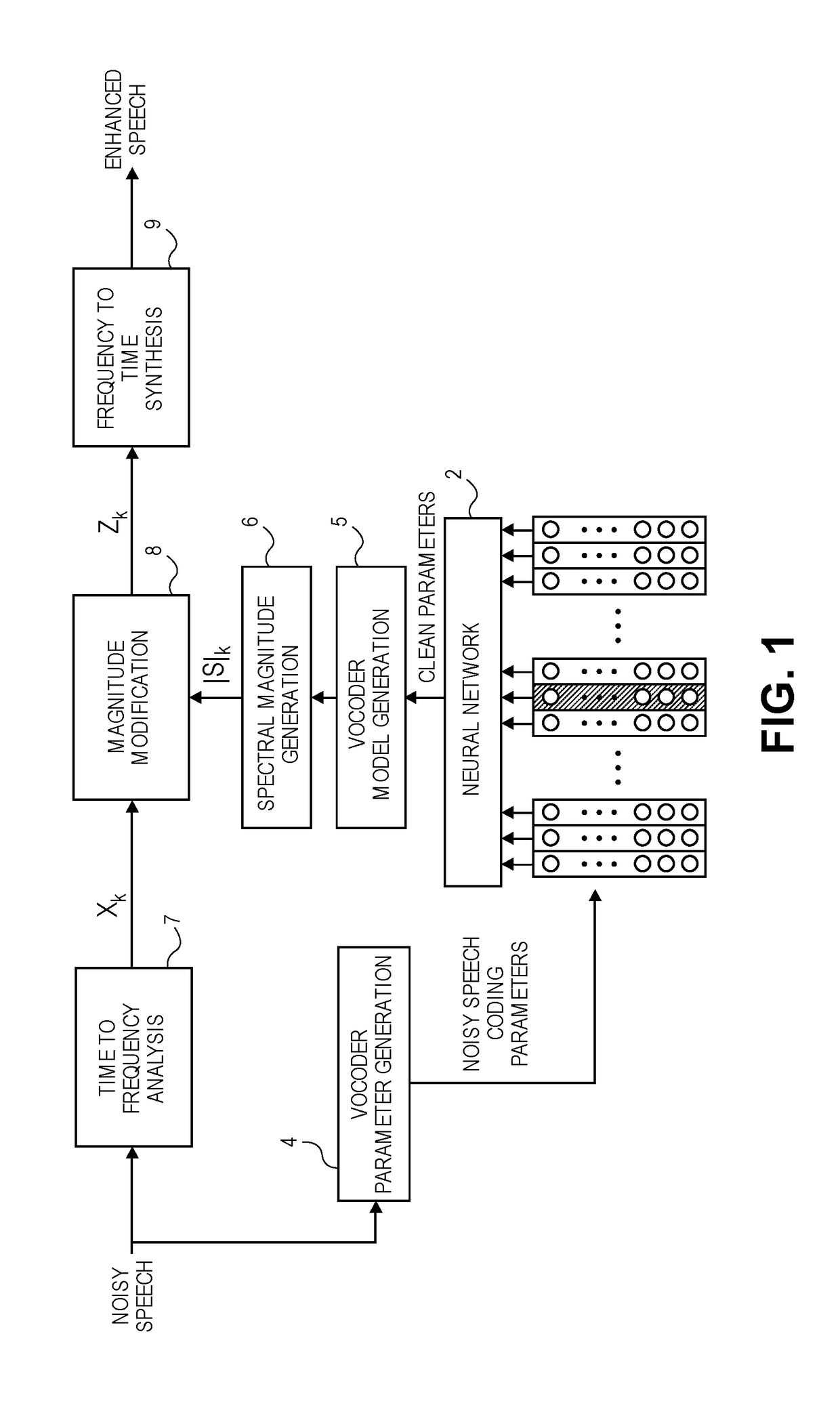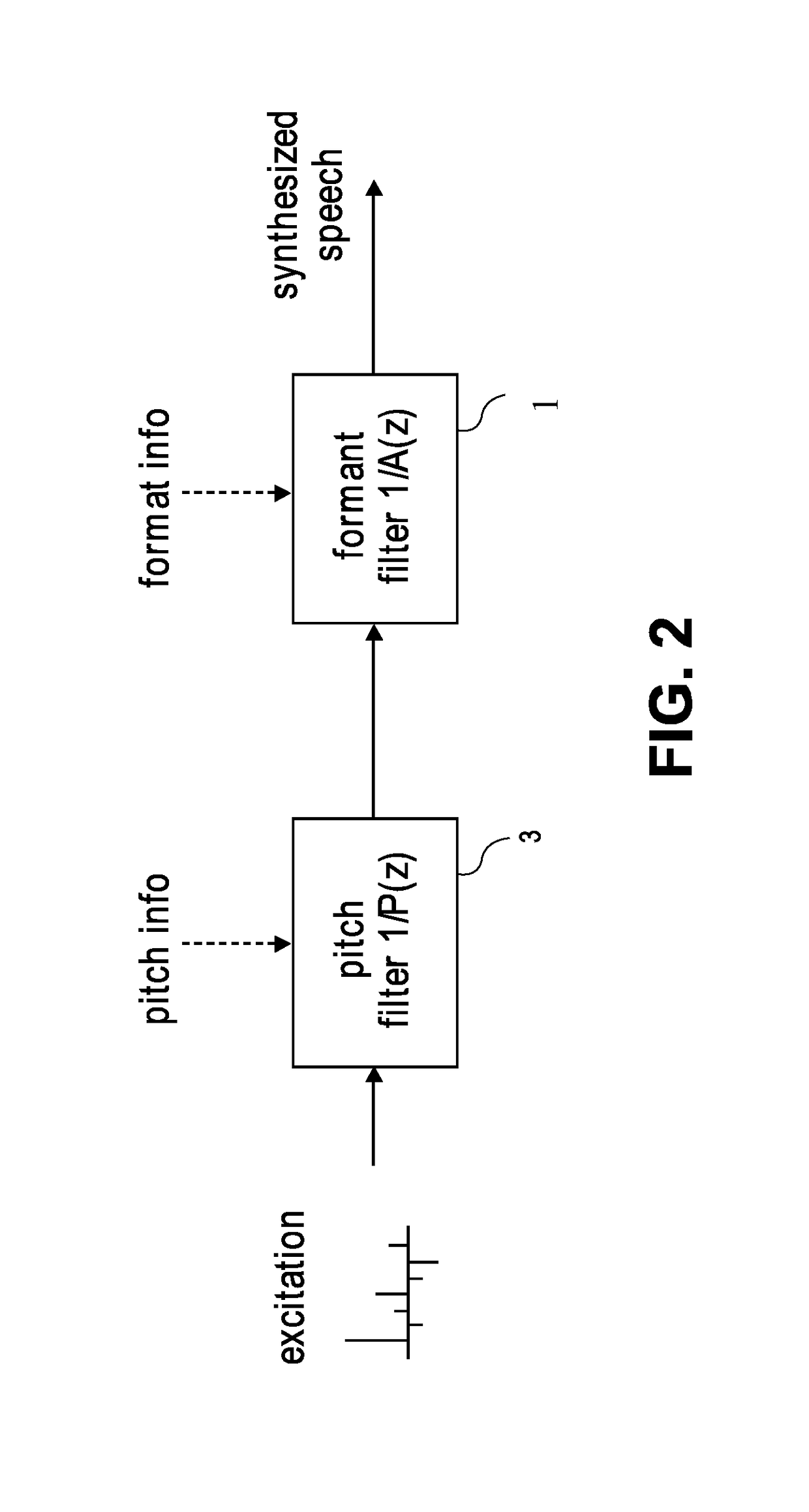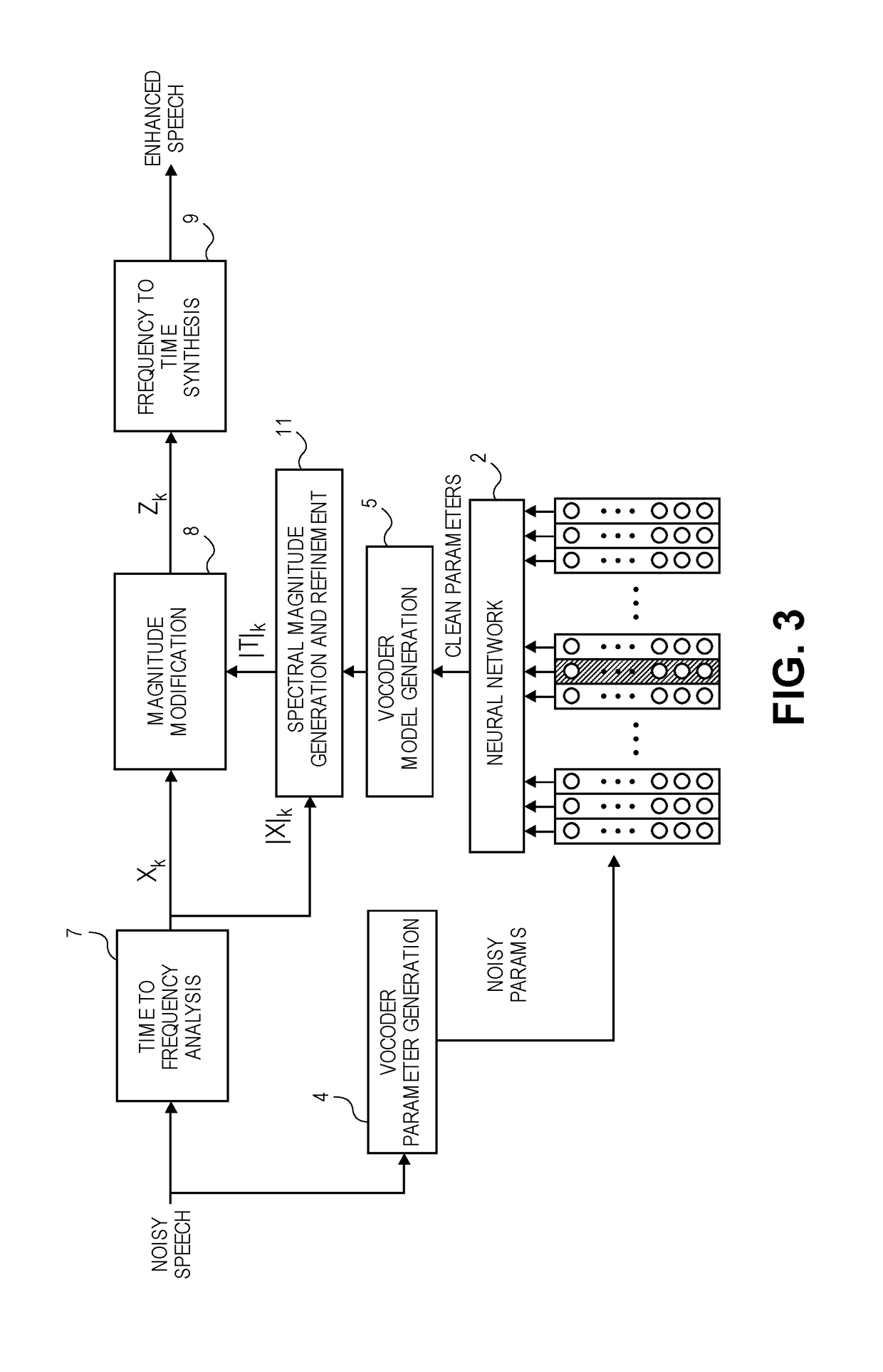Speech Model-Based Neural Network-Assisted Signal Enhancement
a neural network and speech model technology, applied in the field of digital signal processing techniques, can solve the problems of large and complex dnns, and lower word error rates when, so as to reduce the amount or complexity of information, enhance speech signals, and reduce word error rates
- Summary
- Abstract
- Description
- Claims
- Application Information
AI Technical Summary
Benefits of technology
Problems solved by technology
Method used
Image
Examples
case 1
[0036] If there is a dip in the spectrum of noisy speech, it is unlikely that there is a bump in the clean speech (based on the understanding that additive noise usually creates a peak, not a trough); from this one can infer that if the raw neural network-predicted LPC envelope (presumably representing clean speech) does not dip as much, in a given set of one or more adjacent frequency bins, as a dip in or other behavior of the noisy speech, or in other words stays higher than the noisy speech in the given frequency bins, then the raw neural network-predicted LPC envelope is likely over-estimating in that bin. A downward magnitude correction should be made in that case, to the affected frequency bins (derived from the neural network-predicted result.)
case 2
[0037] If there is a peak in the noisy speech spectrum, and if the LPC envelope is also peaking in that bin, then it is possible that the LPC envelope is estimating properly (or it is not over-estimating) in that bin. No correction need be made in this case.
case 3
[0038] Consider the pitch envelope (frequency response of a pitch filter 3), when harmonics are exhibited and are multiplied by the LPC envelope; analysis of a comparison between this combined result (representing clean speech) and the noisy speech confirms that it is unlikely that adding noise to speech would remove peaks from the speech. This reasoning can be extended as follows: if the neural network-predicted LPC+pitch envelope dips in a given frequency bin in which the noisy speech is peaking, the neural network prediction is under-estimating. An upward correction should be made in that case.
PUM
 Login to View More
Login to View More Abstract
Description
Claims
Application Information
 Login to View More
Login to View More - R&D
- Intellectual Property
- Life Sciences
- Materials
- Tech Scout
- Unparalleled Data Quality
- Higher Quality Content
- 60% Fewer Hallucinations
Browse by: Latest US Patents, China's latest patents, Technical Efficacy Thesaurus, Application Domain, Technology Topic, Popular Technical Reports.
© 2025 PatSnap. All rights reserved.Legal|Privacy policy|Modern Slavery Act Transparency Statement|Sitemap|About US| Contact US: help@patsnap.com



